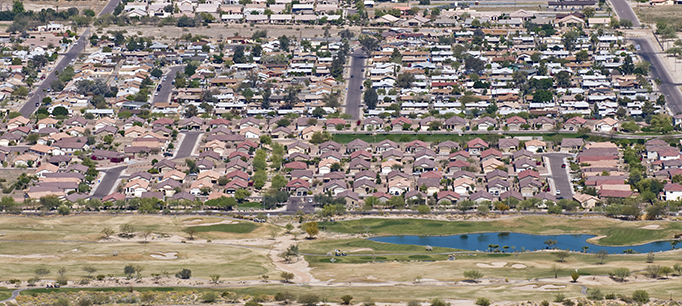
When water supplies are tight—as during the latest drought—discussions often turn to the question of whether state and local governments should be limiting growth. How western states are managing this issue—and areas where improvement is needed—was the topic of my presentation at a recent conference on sustaining western water. The event, which also featured presentations from three members of the PPIC Water Policy Center’s research network, was sponsored by the Renewable Natural Resources Foundation.
Most western states have laws to ensure adequate water supply for new developments. These laws generally require that developers—or the city and county governments that approve new construction on their behalf—ensure the availability of long-term supplies before the projects can go forward. In rural areas, the concern is often to prevent individual consumers from being sold a “dry lot,” lacking basic services. In larger communities, the concern is more often about making sure that new projects don’t reduce the reliability of community-wide supplies, ultimately requiring costly new investments for existing residents. California’s law falls somewhere in the middle of the spectrum. We require new developments of 500 or more units to demonstrate at least 20 years of water supply availability. (Arizona’s law requires 100 years of supply in major metropolitan areas; Colorado usually leaves this decision up to local utilities.)
Our research has found that these laws are working fairly well in cities and suburbs, where utilities can provide good oversight and draw on multiple tools to ensure water availability. For instance, in California, utilities generally require supplies well beyond the 20-year requirement of state law. Investments in conservation, recycled wastewater, new storage, and water trading have all enabled communities to accommodate growth.
Things are more likely to fall through the cracks in smaller rural communities. As California has seen during the latest drought, some well-dependent rural homes are facing water supply shortages; many also have inadequate sanitation and other services.
Western states also need to devote more attention to agricultural land use. On average, farms use 85 percent of total business and residential water use in the West, so farming needs to be part of any equation addressing water scarcity. Pressing issues right now include making sure there’s enough water to support long term investments in tree and vine crops, which now account for more than 40 percent of crop acreage in the water-scarce San Joaquin Valley. And as we move to implement the new Sustainable Groundwater Management Act, there’s great interest in making sure that communities manage both urban and farm development in ways that protect lands with high potential for groundwater recharge. This means not paving over these lands in cities and managing farmlands so that these fields can be flooded during winter and early spring.
Watch these video presentations from other PPIC Water Policy Center researchers who spoke at the conference:


